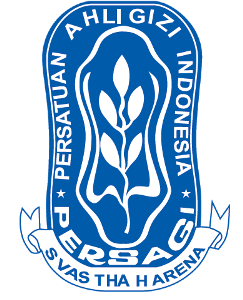Perbedaan Tingkat Konsumsi Energi, Lemak, Cairan, dan Status Hidrasi Mahasiswa Obesitas dan Non Obesitas
DOI:
https://doi.org/10.21776/ub.ijhn.2015.002.01.2Abstract
Abstrak
Dehidrasi merupakan kondisi kekurangan cairan tubuh karena jumlah cairan yang keluar lebih banyak daripada jumlah cairan yang masuk. Terdapat 37,3% remaja asupan cairannya kurang dari 90% kebutuhannya atau resiko dehidrasi. Dehidrasi dapat menjadi faktor resiko terjadinya obesitas pada anak dan remaja disamping asupan energi dan lemak yang berlebihan. Tujuan penelitian untuk mengetahui perbedaan tingkat konsumsi energi, lemak dan cairan, serta status hidrasi pada mahasiswa obesitas dan non obesitas di Akademi Gizi Surabaya. Penelitian ini merupakan studi observasional analitik, dimana mencoba membanding antara kelompok obesitas dan non obesitas atau case control study. Populasi dalam penelitian seluruh mahasiswa Akademi Gizi Surabaya sebanyak 170 mahasiswa baik yang obes maupun normal, dan sampel yang diambil sebanyak 31 mahasiswa obesitas (total population) dan 31 mahasiswa non obesitas (simple random sampling). Pengambilan data asupan energi,lemak dan cairan dilakukan dengan repeated recall dan status hidrasi dilakukan dengan tes urine sedangkan uji statistik yang digunakan untuk melihat perbedaan dua kelompok dengan uji Chai Square. Hasil penelitian menunjukkan bahwa ada perbedaan tingkat konsumsi lemak, cairan dan status hidrasi pada mahasiswa obesitas dan non obesitas di Akademi Gizi Surabaya. Mahasiswa yang obesitas memiliki tingkat konsumsi energi dengan kategori di atas normal yang lebih tinggi bandingkan mahasiswa non obesitas. Tingkat konsumsi lemak pada mahasiswa non obesitas dengan kategori defisit berat lebih tinggi (32.3%) dibandingkan kelompok obesitas (3.2%). Tingkat konsumsi cairan pada mahasiswa obesitas dengan kategori defisit berat lebih tinggi (64.5%) dibandingkan non obesitas (19.4%). Pada status hidrasi, mahasiswa obesitas banyak mengalami dehidrasi yaitu 21 responden (67.7%), dibandingkan mahasiswa non obesitas yaitu 6 responden (19.4%). Diharapkan mahasiswa terutama yang obesitas harus mendapatkan cukup informasitentang pola makannya terutama asupan cairan, karena ini akan mempengaruhi konsentrasi belajar. Perlu adanya penelitian lanjutan antara asupan cairan dan status hidrasi dengan status kesehatan pada mahasiswa.
Kata kunci : Energi, Lemak, Cairan, Status Hidrasi, Obesitas
Â
Abstract
Dehydration is a condition of the body dehydrated because the amount of fluid comes out more than the amount of fluid intake. There are 37.3% of teens who drink less than 90% of requirements or had dehydration risk. Dehydration could be a risk of obesity besides excessive intake of energy and fat. The purpose of this study is to determine differences in the level of energy, fat and fluids consumption, and hydration status in obese and non-obese students in the Nutrition Academy of Surabaya. This was an analytical observational study which designed tried to find the differences between the two groups (obese and non obese group) or “case control studyâ€. The population was Nutrition Academy of Surabaya, consisting 170 students, and the samples comprised 31 students of obese (total obese students) and 31 students non-obese (simple random sampling). Repeated Food Recall was used to get energy, fat and fluid consumption. Urine test was used to know the hydration status. Statistical test used Chai Square Test .The results showed that there was a difference in the level of energy consumption, fat and fluids, and hydration status in obese and non-obese students in the Nutrition Academy of Surabaya. Students who are obese have higher percentage of energy consumption whose category more than normal compared to those who are non-obese. The percentage of fat consumption in non-obese students with severe deficiency was higher (90.9%) compared to those with obesity (9.1%). The percentage of fluid intake in obese students with severe deficiency level was higher (76.9%) than those of non-obese students (23.1%). In hydration status, many obese students were dehydrated, consisting of 21 respondents (77.8%), compared to non-obese students which are 6 respondents (22.2%). To get better health and students achievements, students have to get enough information about the advantages of fluid consumption., especially those who are obese. It is suggested that further research is conducted to see the relationship between fluids consumption and dehydration with health status of the students.
Keywords: Fluids Consumption, Hydration Status, Obese and Non-ObesePublished
How to Cite
License

This work is licensed under a
Creative Commons Attribution-NonCommercial 4.0 International License




















